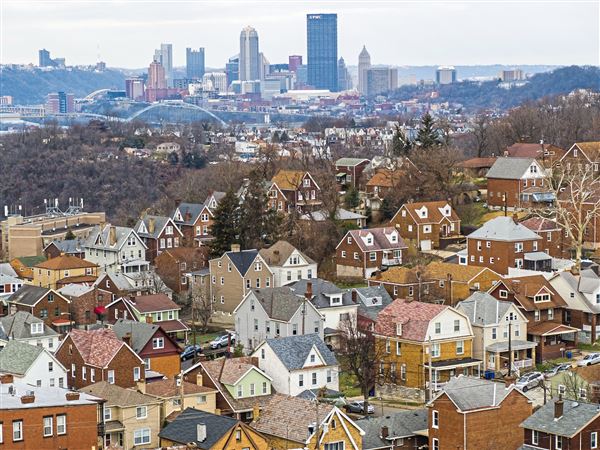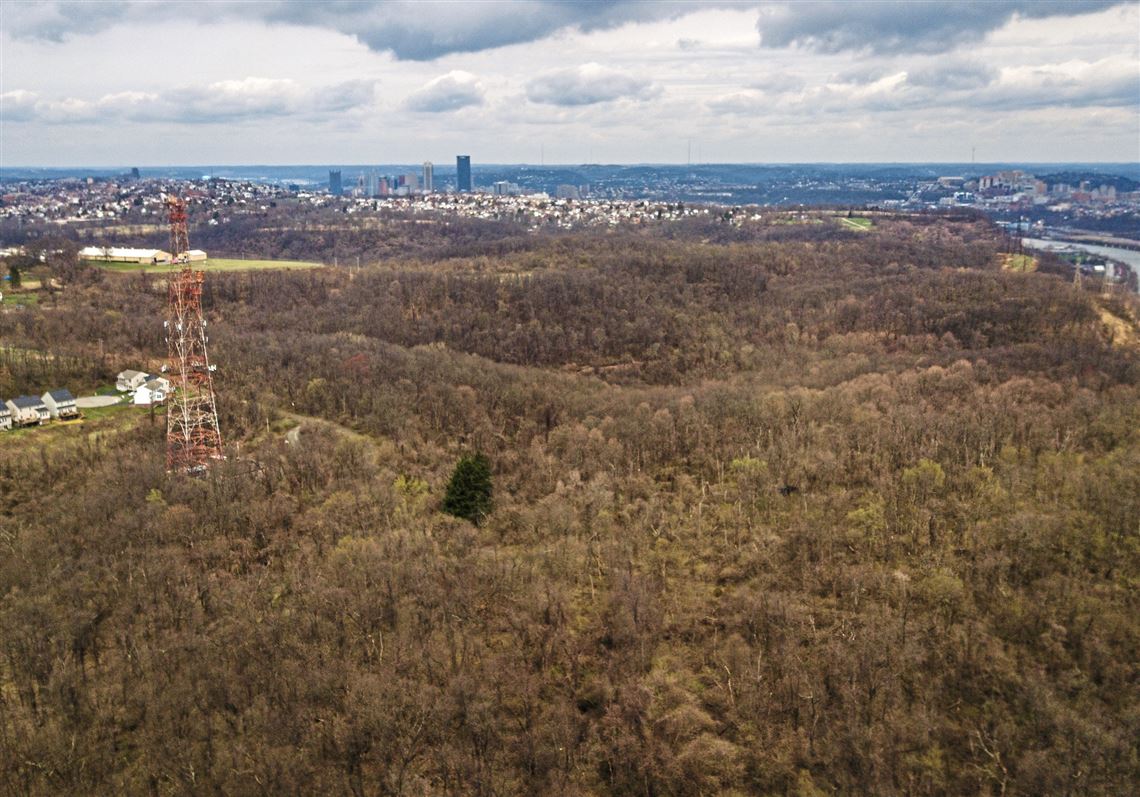Hays Woods, a 600-plus-acre woodland overlooking the Monongahela River, presents a remarkable opportunity to craft a model urban wilderness that preserves and protects nature while making its wonders accessible to as many people as possible. That will mean working with foundations, and committing an annual city budget line item, to establish long-term funding to remediate invasive species, introduce some modest trailhead amenities and maintain a variety of paths through this beautiful landscape.
At the same time, the process by which the property came into the city’s possession raises questions about the transparency of transactions between the city and the Urban Redevelopment Authority (URA) — not only to the public, but to the City Council that has a fiduciary responsibility to steward the people’s resources.
Hays’ history
The land, a rugged plateau between the Becks Run and Glass Run valleys surrounded on three sides by Baldwin Borough, is named for Samuel Hays, a farmer whose family eventually mined the hill for coal. It later came into the possession of riverfront industrial interests, including Jones & Laughlin and LTV steel companies, but the land largely went unused.
In the early 2000s, developers saw tremendous opportunity in Hays Woods, one of the largest undeveloped urban tracts in America. The proposed development, called The Palisades, would have been a massive complex with a thoroughbred race course and casino. It would have required scalping the hilltop and filling in the waterfalls and ravines — a desecration.
Thankfully good sense prevailed, and smaller development projects also faded away. In 2016, the URA purchased Hays Woods for $5 million.
Since then, the land has been the subject of several studies, but only modest improvements. In 2017, the Western Pennsylvania Conservancy produced a wonderfully detailed ecological assessment for the Allegheny Land Trust.
Two years later, Mayor Bill Peduto convened a task force, co-chaired by then-Councilman Corey O’Connor and former Mayor Tom Murphy. It recommended preserving Hays Woods in its natural state, while enhancing access for people to enjoy it. The task force’s work remains compelling today, and should guide further work.
An obscure transaction
The URA was always meant to hold Hays Woods until the city could establish it as a park. In November 2021, City Council approved its sale to the city for “$1 plus costs.” Despite news reports of the sale at the time, it never occurred. Then in 2023, council passed two resolutions, reflecting the URA’s subdivision of the Hays Woods lot due to complications with Baldwin Borough, authorizing the same transaction for “$1 plus costs.”
In mid-2022, however, the Gainey administration proposed a curious change to the city’s American Rescue Plan Act (ARPA) pandemic relief fund allocation: a full $2 million to acquire Hays Woods from the URA. While Allegheny County property records show that the Hays Woods lots were later purchased for $1 each , the city’s contract includes a $2 million sale price, while the invoice indicates $2 million for “closing costs.” This is obviously not the case.
When the ARPA reallocation was under council consideration, Office of Management and Budget Director Jake Pawlak gave the administration’s reason for the $2 million. (While we have scrutinized Mr. Pawlak’s conduct, his report before council last July demonstrated lucid and comprehensive knowledge of city government.) In his telling, the URA had spent a total of $6 million in acquiring and maintaining Hays Woods, and had received $4 million in charitable support. The $2 million would make the agency whole.
This may well be accurate. The problem is there’s no public documentation to back it up. (The URA’s 2022 audited financial statements aren’t even on its website; its 2021 statements were completed in April 2022.) Further, why list that $2 million as “closing costs” and obscure it under the name of “costs” in council legislation authorizing the sale? Can the city claim that any interagency transaction it likes is simply “costs,” with nothing more than the verbal assurance of a city official?
Understanding the personnel limitations that City Council must work under, we’d like to see more Council scrutiny of transactions like this one, which suggest a large loophole through which funds can be quietly moved.
A bright future
Despite this, the future of Hays Woods should be bright. City Council designated the land an official city park in July, and the Pittsburgh Parks Conservancy, with the support of the Richard K. Mellon Foundation, already has a full-time employee directing the remediation of invasive species. Following the 2019 task force, we’d like to see dedicated funding from some combination of the City of Pittsburgh, the Allegheny County Regional Asset District and local foundations to ensure improvements at Hays Woods never become derelict.
As for the land itself, there are informal trailheads, reflecting old roads cut through the site, at the end of Agnew Road and along Glass Run Road. A natural place for a new trailhead — though it would require an easement from Baldwin Borough and a nearly 500-foot vertical climb to reach the summit of the property — would be at the bottom of Becks Run Road near East Carson Street. This location would also be most accessible by bike and, if a bus route were rerouted, transit.
New and existing trailheads should be improved with parking, kiosks, maps and, if possible, amenities such as picnic tables. Trailblazing and signage should be sure to include the property’s waterfalls, as well as multiple scenic points overlooking the Monongahela and the Becks Run and Glass Run valleys.
It won’t require massive construction to make the most of Hays Woods — just a good deal of care, and dedicated funding to make sure it is never forgotten.
First Published: September 21, 2023, 11:34 a.m.


















